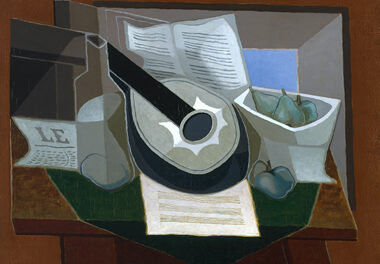Piedmont Opera, under the musical direction of James Allbritten and with stage direction by Steven LaCosse, offered a stunning performance of the opera Mary, Queen of Scots (Maria Stuarda) by Italian composer Gaetano Donizetti (1797-1848) to a packed house at the Stevens Center in the center of Winston-Salem. Having disappeared from the stage for over a century after its premiere in 1835, Mary, Queen of Scots is a dramatic opera in which one queen (Elizabeth) plots to behead another queen (Mary, Queen of Scots), an event which refers to 16th-century history although the actual meeting of the two queens, face-to-face, is fictionalized.
Two outstanding sopranos vie for our affection or earn our distain, Jodi Burns in the title role and Yulia Lysenko as the reigning monarch, Elizabeth of England. Burns has a pure warm tone and a tremendous rang. (Her top notes are to die for.) Her musical temperament flared up magnificently in the Scene 2 (Act I) confrontation with the Virgin Queen when she is taunted into calling Elizabeth a harlot and calling into question of the legitimacy of her birth and her right to the throne. After being thoroughly rebuked, her closing high “D” was a sassy slap in the face to the cruel Elizabeth.
As Elizabeth, the reigning monarch who had imprisoned Mary, Queen of Scots, for 18 years, Lysenko was at once cunning, conniving, and haughty, with a rich, powerful, and dramatic voice that took on those attitudes with ease. Lysenko was touching in portraying the queen’s hesitancy to act and reluctance to disclose her true feelings, keeping awake the possibility of redemption, but to no avail. Her dramatic sense of timing dominated the action in the entire first scene.
A newcomer to the Piedmont Opera stage, Jonathan Hays‘ deep and rich bass voice lent credibility to the character of George Talbot, the Earl of Shrewsbury, historically charged by Elizabeth to supervise Mary’s imprisonment but, in Donizetti’s version, a sympathizer and her confidante. He was outstanding in the entire second act!
Anna Kennedy, Mary’s nurse, was sung by another newcomer, Brennan Martinez, a fellow at the A. J. Fletcher Opera Institute. Martinez is gifted with a rich warm mezzo-soprano voice with excellent diction, and a nimble stage presence. She reacts touchingly when selected by Mary to blindfold her with her tear-soaked handkerchief when she must confront her executioner.
Dan Boye portrays the cold and stern Lord William Cecil, the advocate of harsh treatment of Mary in Act I, goading Elizabeth when she wavers. His baritone voice is effectively chilling in the last act when he unwaveringly takes charge of the beheading.
Kirk Dougherty, tenor, portrays the role of Robert, Earl of Leicester and the love interest of Queen Elizabeth, but his own interest lies in the beautiful prisoner, Mary, Queen of Scots, thereby both provoking Elizabeth and sealing Mary’s fate.
Special congratulations go to the ladies and gentlemen of the Piedmont Opera Chorus, which has never sounded better. Indeed, the longest applause that interrupted the action on stage was for the chorus, after they and Mary sang the magnificent prayer in the final scene of the opera. Appropriately, Maestro James Allbritten stopped the applause with the cannon shot which was to signal the impending execution.
Costumes, especially those worn by the chorus, were magnificent and timely, creating individuality, yet unified by the use of subdued colors. The minimalist stage, dominated by large checked squares on the floor, was effective in focusing the attention on the action and the music. The same may be said for the lighting although the change in color of the clouds in the second scene, (outdoors, before the confrontation of the two queens) was very effective and portentous of the action to come.
The Winston-Salem Symphony in the pit, conducted by Allbritten, set the scene magnificently and backed chorus and soloists without ever covering them or obstructing pronunciation or diction. Lovely double bass and cello lines opened several chilling scenes and the clarinet work in thirds was lovely. The strings played more accompaniment after-beats than they might have wished; nonetheless, the whole performance was first-rate.
The opera will be repeated on Sunday afternoon, October 20 and Tuesday evening, October 22. See our sidebar for details.


![Exploring Classical Music: A Pleasant Journey for Novice and Expert by Robert Finn. Feb. 2001. ISBN 1-931055-30-0. http://www.SuperiorBooks.com/ [inactive 11/05]](https://cvnc.org/wp-content/themes/Extra/images/post-format-thumb-text.svg)








